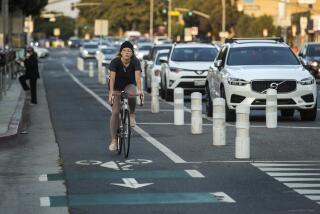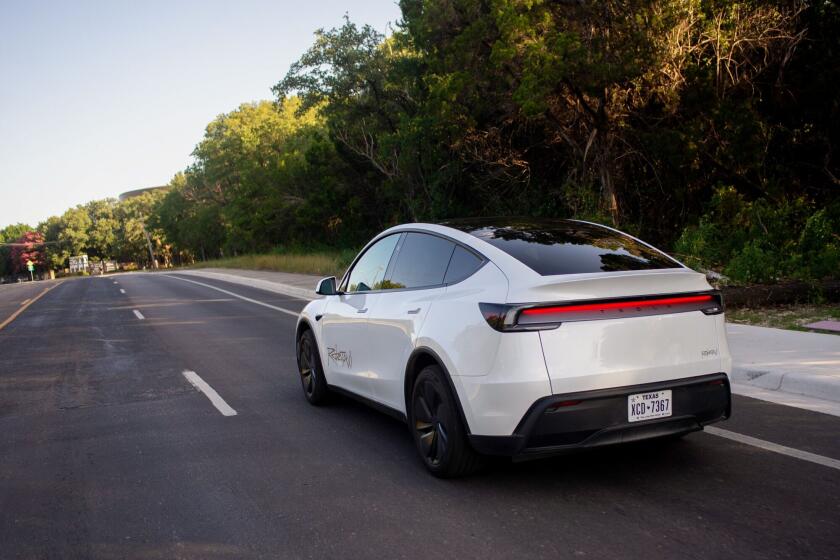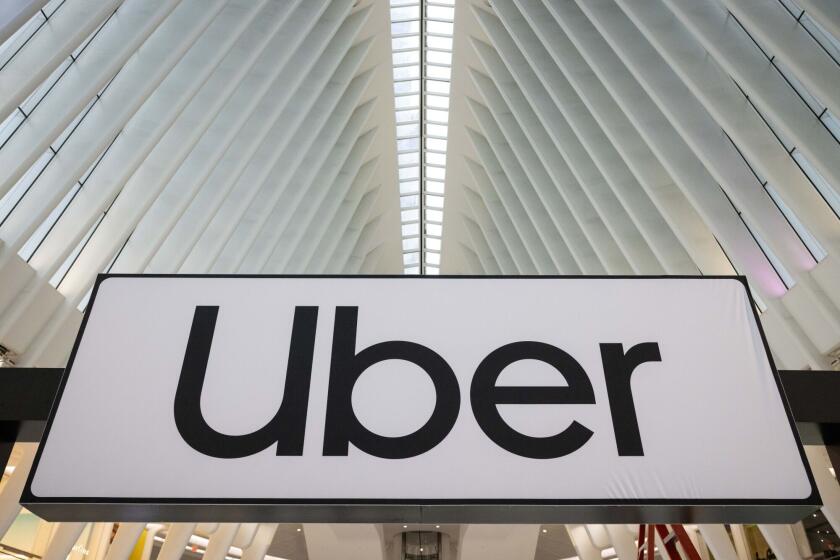MTA approves South L.A.-South Bay light-rail line
- Share via
A new light-rail system through South Los Angeles and the South Bay was approved by transit officials Thursday, but some local politicians and residents worry that the rail line could pose similar problems that have hampered other projects.
The 8 1/2 -mile line is the biggest beneficiary to date of Measure R, the half-cent sales tax for transportation projects that L.A. County voters approved last year.
Metropolitan Transportation Authority officials said Measure R revenues would provide most of the estimated $1.7 billion needed for the Crenshaw/LAX Transit Corridor Project, which would pay for a relatively bare-bones version of the line. But some residents and officials want more of the line underground, saying that it would reduce accidents, ease community concerns and speed up the line.
The MTA has grappled with this issue before.
The Gold Line Eastside extension was criticized by one of its biggest backers, Los Angeles County Supervisor Gloria Molina, because it is mostly at street level, where, she says, it could pose a risk for drivers and pedestrians.
The Gold Line from downtown Los Angeles to Pasadena is also mostly above ground, and it has struggled to attract riders in part because the numerous at-grade crossings make it a relatively slow ride.
The Crenshaw line would provide commuter rail service to a part of the county that is now served exclusively by buses.
The line would run from Exposition Boulevard to Imperial Highway, following Crenshaw Boulevard and passing through Leimert Park and Southwest L.A. before veering southwest through Inglewood and south to Aviation Boulevard near Los Angeles International Airport.
Officials said they hope to break ground on the project in 2012 or 2013 and open the line in 2018. Some believe the line could be open as early as 2016.
“It’s a huge victory for the Crenshaw community and the South Bay community,” Supervisor Mark Ridley-Thomas said. “I expect it will have a highly positive impact on the quality of life in that corridor.”
Still, Ridley-Thomas said, he is fighting to get more of the Crenshaw line built underground. He said the Expo Line, now being built between downtown and Culver City, is facing delays in part because of safety improvements required where the train will pass some schools.
“I do not want this to be haunted by the ghosts of the Expo Line,” he said, adding that the MTA is going to study building an additional segment on Crenshaw Boulevard between 48th and 59th Streets underground.
Building underground is much more expensive than at street level, and officials said they don’t know where the money for Ridley-Thomas’ plans would come from.
The line’s project manager, Roderick Diaz, said, “There is currently no budget to cover that” nor is there sufficient funding for some other “big ticket items” included in some of the possible designs.
Ridley-Thomas estimated that the project would need about $400 million in extra funds to build the line as he would like, and said he is going to Washington, D.C., in the near future to speak with members of Congress about other sources of funding.
Officials said the rail line would provide a critical north-south route for commuters between downtown L.A. and the Westside.
Right now, the only north-south rail line south of downtown is the Blue Line, which goes to Long Beach.
The Crenshaw line, planners say, also would make it possible to get to more places by rail, because the line would connect to the Expo Line (service to downtown and the Westside) and Green Line ( service from Norwalk to Redondo Beach).
Officials also hope that the line might take some motorists off the 405 and 110 freeways.
More to Read
Sign up for Essential California
The most important California stories and recommendations in your inbox every morning.
You may occasionally receive promotional content from the Los Angeles Times.













